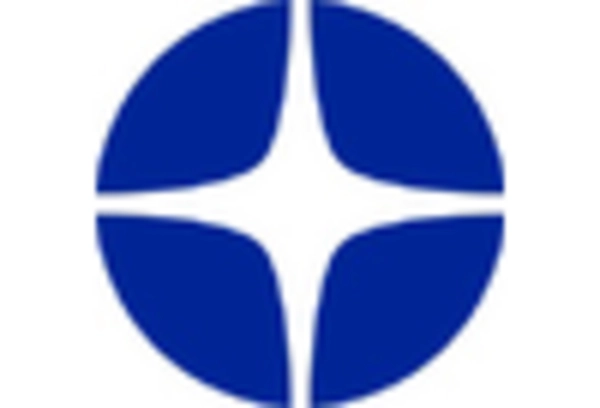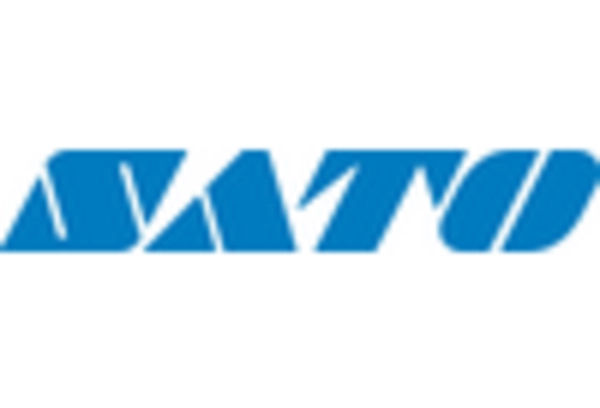Expansion of E-commerce
The rapid expansion of e-commerce platforms is significantly influencing the Barcode Software Market. As online shopping continues to gain traction, businesses are increasingly adopting barcode software to manage their inventory and streamline order fulfillment processes. Data indicates that e-commerce sales are projected to reach trillions of dollars in the coming years, necessitating efficient inventory management systems. Barcode software plays a crucial role in ensuring accurate tracking of products, thereby enhancing customer satisfaction and operational efficiency. This growing reliance on barcode technology in the e-commerce sector is likely to drive the Barcode Software Market forward, as companies seek to optimize their logistics and supply chain operations.
Rising Demand for Automation
The Barcode Software Market is experiencing a notable surge in demand for automation across various sectors. As businesses strive to enhance operational efficiency, the integration of barcode software into inventory management, logistics, and retail operations becomes increasingly prevalent. According to recent data, the automation of supply chain processes can lead to a reduction in operational costs by up to 30%. This trend is particularly evident in industries such as manufacturing and retail, where the need for real-time tracking and data accuracy is paramount. Consequently, the Barcode Software Market is poised for growth as organizations seek to streamline their operations and reduce human error through automated solutions.
Increased Focus on Data Analytics
The Barcode Software Market is witnessing a heightened focus on data analytics as organizations recognize the value of data-driven decision-making. Barcode software not only facilitates tracking and inventory management but also generates valuable data insights that can inform business strategies. Companies are increasingly leveraging these insights to optimize their operations, improve customer experiences, and enhance product offerings. The integration of advanced analytics tools with barcode software allows businesses to identify trends, forecast demand, and make informed decisions. This trend suggests that the Barcode Software Market will continue to evolve, as organizations prioritize data analytics to gain a competitive edge.
Regulatory Compliance and Standards
The Barcode Software Market is significantly influenced by the need for regulatory compliance and adherence to industry standards. Various sectors, including healthcare and food safety, require strict compliance with regulations that mandate accurate tracking and labeling of products. Barcode software provides a reliable solution for meeting these compliance requirements, ensuring that businesses can avoid penalties and maintain operational integrity. As regulatory frameworks continue to evolve, the demand for barcode software that can adapt to these changes is likely to increase. This trend indicates a robust growth trajectory for the Barcode Software Market, as companies prioritize compliance in their operational strategies.
Technological Advancements in Barcode Solutions
Technological advancements are playing a pivotal role in shaping the Barcode Software Market. Innovations such as mobile scanning applications, cloud-based solutions, and enhanced barcode formats are transforming how businesses utilize barcode technology. These advancements enable organizations to improve efficiency, reduce costs, and enhance user experiences. For instance, the adoption of mobile scanning applications allows employees to scan barcodes using smartphones, streamlining operations and reducing the need for specialized equipment. As technology continues to evolve, the Barcode Software Market is expected to witness sustained growth, driven by the demand for more sophisticated and user-friendly barcode solutions.


















Leave a Comment